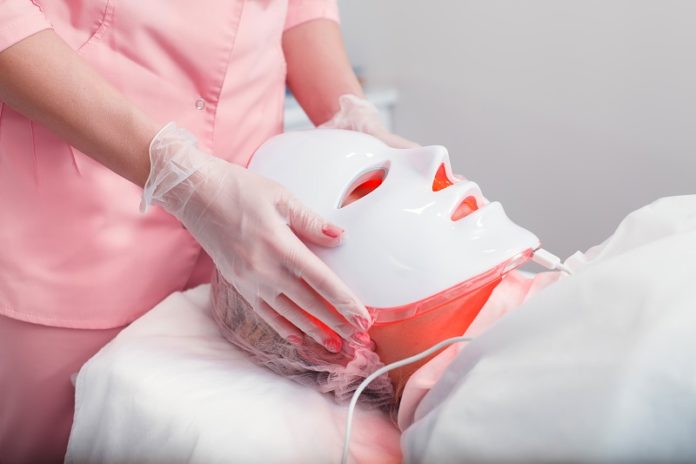Have you heard about red light therapy? It is said to improve the look of your skin and aid in wound healing and tissue repair. Others add that it boosts circulation. Women’s magazines like Glamour have gone so far as to call it “the fountain of youth.” You can now find it at gyms, spas, and cosmetic surgery clinics. However, as we know, things that sound too good to be true often are.
Because red light therapy is newer, there aren’t a lot of scientific studies to back up what’s out in the world. Until we learn more, red light therapy will likely remain controversial. But let’s take a look at what we know so far.
What is Red Light Therapy?
You may know red light therapy by another name. It’s also known as photobiomodulation (PBM), low-level light therapy (LLLT), biosimulation, or photonic simulation. Scientists first used red light therapy in the 90s to try to grow plants in outer space, and now it has become a skin therapy and more.
It is said to work by stimulating the production of collagen and other key proteins. It’s delivered in much the same way as UV light therapy. You absorb the red light either by lying in a bed that looks like a tanning bed or standing in front of a big light fixture. Light can also be applied more locally, as with a mask or small handheld devices. The light penetrates the skin more deeply than creams or serums.
You may remember hearing about the mitochondria in your cells. The red light therapy helps strengthen your mighty mitochondria. Strong mitochondria help cells function effectively and repair any damage. As I’ve discussed before, mitochondrial disease could cause fatigue and low energy.
Research on Red Light Therapy
In a 2014 study published in Photomedicine and Laser Therapy, researchers examined the effects of red light therapy both for small, contained areas and full body treatment. They treated patients twice a week and compared them with controls. The researchers reported: “The treated subjects experienced significantly improved skin complexion and skin feeling, profilometrically assessed skin roughness, and ultrasonographically measured collagen density.”
They used light in the spectral range of 600 to 1300 nanometers, but what you’d receive in an office setting is on the lower end of that range. Also, keep in mind that red light therapy is not a one-time treatment, so you’ll have to be prepared to do this multiple times.
A more recent study, published in the journal Dermatology, compared the effects of amber light with the red light on three signs of aging: wrinkles, skin hydration, and elasticity. Their study seemed to confirm the efficacy of red light for this purpose and, they say, will pave the way for future study.
Current research is underway to study the effects of red light for traumatic brain injury and Alzheimer’s disease.
Benefits and Drawbacks of Red Light Therapy
In existing studies, red light therapy has shown to improve the appearance of skin in a variety of conditions. It can help reduce the look of wrinkles and stretch marks. It can also decrease the lesions caused by psoriasis.
But the reported benefits are more than just for skin therapy. Red light therapy can help decrease the side effects related to chemotherapy.
Red light therapy is more advantageous in comparison with other laser treatments because the side effects aren’t as significant. Some of the more significant side effects include burns and blistering. Just like any other laser treatment, be sure to wear eyewear to protect your eyes from the lasers.
Who Can Provide Red Light Therapy?
At the moment, because red light therapy is controversial, not a lot of insurance companies cover the treatment. It’s also likely that your general practicing doctor won’t offer red light therapy. You’ll have to go to a specialist or a dermatologist in order to receive red light therapy.
Regardless of the name, red light therapy can be a useful tool to diminish any blemishes or alleviate any side effects from treatments. Be sure to consult your doctor and find someone who’s licensed to perform the procedures.








